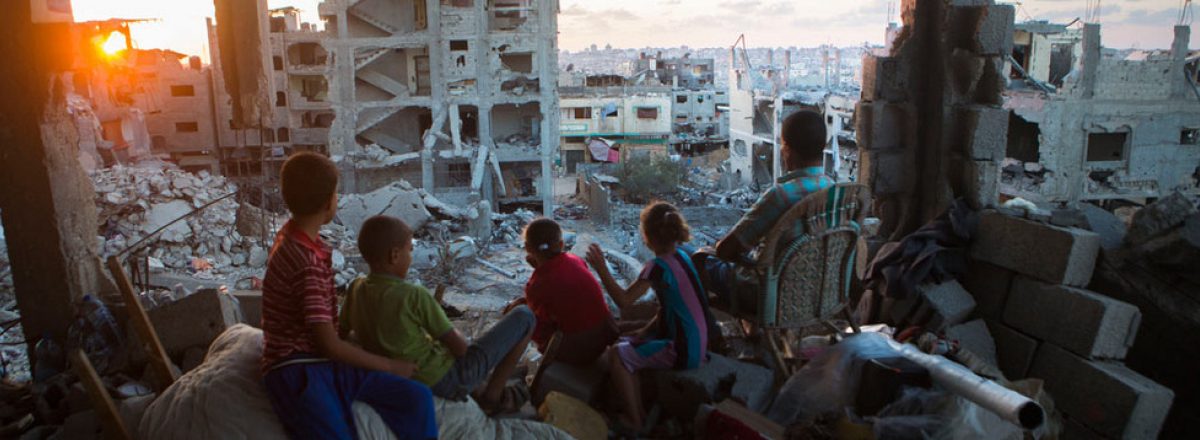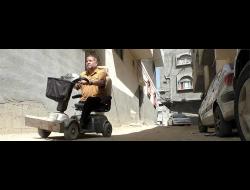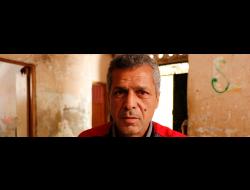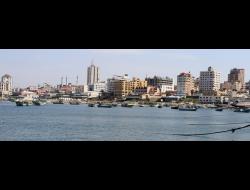The Gaza Strip is the scene of a humanitarian crisis that has nothing to do with natural causes; it is entirely man-made, a direct result of official Israeli policy.
The Gaza Strip is the scene of a humanitarian disaster that has nothing to do with natural causes – it is entirely man-made, a direct result of official Israeli policy. Israel can choose to change this policy and considerably improve the lives of Gaza’s residents. It can also choose to continue this cruel, unjustifiable policy, which sentences the nearly two million people living in Gaza to a life of abject poverty and nearly inhuman conditions.
In early September 2015, the United Nations Conference on Trade and Development published a report on the situation in Gaza after eight years of blockade and three rounds of fighting between Israel and the Palestinians. The report cautioned that without significant changes to Israel’s policy, Gaza has no chance of recovery and will become unlivable by 2020. Rather than change its policies in the time that has elapsed since the report, Israel has made them stricter, the situation has deteriorated and Gaza has long since become unliveable.
Israel’s responsibility
Israel contends that its role as occupying power in the Gaza Strip ended in September 2005, when it dismantled all settlements there, withdrew its military forces and declared the end of the military government. Further to this position, Israel contends that it no longer has any obligations or responsibilities toward Gaza residents, other than minimal humanitarian duties designed to prevent a serious crisis in the Gaza Strip.
This position is entirely baseless. In the early years following the implementation of Israel’s Disengagement Plan, there was some vagueness regarding Israel’s legal obligations toward Gaza. However, since then, the conception of degree of responsibility as commensurate with degree of control has taken root. Though Israel is clearly no longer responsible for keeping the peace inside Gaza, and is not generally obliged to see to the welfare of its residents under the laws of occupation, it is still the power that shapes the daily lives of Gaza residents, and as such, also bears responsibility towards them.
Although Israel declared an end to its military administration in Gaza, it continues to control critical aspects of life there. It controls all border crossings by land, apart from Rafah, as well as Gaza’s sea and air space. This control allows Israel to exclusively monitor the movement of people and goods in and out of Gaza, which it regulates according to Israeli interests. This holds true even when Gaza residents wish only to transit through Israel in order to reach the West Bank or other countries.
Rafah Crossing, which is subject to Egyptian control, has been closed for the past few years. Egyptian authorities open it only a few days every year. Yet even then, it may be used only by individuals who meet strict criteria – which are changed every so often. Regardless, using this crossing to travel to other countries involves a long and often dangerous journey; when the destination is no further than the West Bank (including East Jerusalem), or Jordan, this lengthy journey is particularly unreasonable.
The blockade and its ramifications
Isolating Gaza from the rest of the world, including separating it from the West Bank, is part of a longstanding Israeli policy. The implementation began in the 1990s, with the imposition of a closure on all the Occupied Territories and the introduction of the requirement for every Palestinian from these territories – with the exception of areas annexed to Israel – to request a personal permit to enter Israel, even if only for the purpose of travel between the West Bank and the Gaza Strip or abroad. Over the years, Israel has made it increasingly difficult to obtain these permits.
After the second intifada broke out, Israel tightened the restrictions on Palestinian travel, imposing serious restrictions on travel to and from the Gaza Strip, and cutting it off from the West Bank almost completely. Entry of Gaza residents into Israel for the purpose of family visits or reunification with a spouse was prohibited. Visits by Palestinian citizens of Israel and residents of East Jerusalem to relatives in Gaza were reduced to a minimum. In addition, Israel severely restricted the ability of the entire population of Gaza to travel abroad, with many prohibited from doing so altogether. Import and export were restricted and often halted. Israel also banned most Gaza residents from working inside Israel, taking away the source of income of tens of thousands. The restrictions Israel imposed on the movement of goods and workers caused a deep recession in Gaza, impaired its residents’ earning capacity and caused a sharp decline in living standards.
In the summer of 2007, after Hamas took over the Gaza Strip, Israel used its control over the crossings to put Gaza under a blockade overnight, turning almost two million people into prisoners inside the Gaza Strip, effecting an economic collapse and propelling Gaza residents into almost full dependency on international aid.
As part of the blockade, Israel prohibited travel in and out of Gaza, the import of goods into Gaza – including restrictions on food items, toys and paper – and export to Israel, the West Bank or foreign countries. According to documents exposed in October 2010 following a Freedom of Information petition filed by the Gisha organization, it emerged that Israel had employed a “deliberate reductive policy”, based on calculations of the minimal caloric intake required for Gaza residents to survive.
In June 2010, following international pressure on Israel after the takeover of the Turkish flotilla to Gaza, Israel decided to lift some of these restrictions. Among other things, Israel agreed to expand the list of goods cleared for entry into Gaza and allowed the entry of building materials for public and housing projects. As part of this new policy, Israel replaced the narrow list of items allowed into Gaza with a list of strictly prohibited items, such as weapons, as well as a list of “dual-use” items that Israel believes could have both civilian and military uses, which require an individual permit. The second list includes hundreds of items, the lack of which prevents development of factories and restoration of civilian infrastructure. The restrictions on export remained in place even after June 2010, leaving Gaza isolated and with no real opportunity for economic development.
One aspect of the blockade is the reduction of the area where fishing is allowed in Gaza. The Oslo Accords stipulate a range of 20 nautical miles (about 37 km) off the Gaza shoreline, but Israel has never allowed fishing farther than 12 nautical miles out to sea. Over the years, Israel has gradually narrowed the fishing zone, sometimes to three nautical miles only, and currently between six and nine. The Israeli military also restricts fishing in areas bordering Israel and Egypt. Soldiers fire at fishermen alleging they have sailed beyond the restricted zone, arrest them and confiscate their equipment. In this way, Israel prevents Gaza fishermen from reaching the rich fishing grounds located further out to sea, impedes the ability of thousands of fishermen and people working in related sectors to provide for themselves and their families, and denies Gaza residents an essential source of food.
The blockade has driven Gaza’s economy into collapse. In the first quarter of 2022, unemployment reached 47%. In the under 29 age bracket, it was 75%. Some 80% of Gaza’s residents depend on humanitarian aid, and about 60% suffer from food insecurity. In the year 2000, before the blockade was imposed, Gaza’s unemployment rate was 18.9%.
Infrastructure and public services in Gaza are collapsing. Of the water pumped in the Gaza Strip, 96.2% is contaminated and unpotable. Electricity is supplied for just a few hours every day, partly because of a fuel shortage caused by high costs, and partly because of restrictions Israel imposes on the entry of spare parts to maintain existing systems – including repairing the power station it bombed in 2006.
The lack of consistent power supply has disastrous effects. Routine power cuts damage medical equipment. Hospitals are forced to rely on generators and scale back services, including delaying non-urgent surgeries and releasing patients early. The intermittent power supply also impedes the routine operation of water pumps and wells. This interferes with the supply of water for household use and public institutions, which has been greatly reduced. Residents have no choice but to cut back on the amount of water they drink and buy desalinated drinking water from private suppliers. It is estimated that 68% of the desalinated water is also contaminated, increasing the risk of disease spreading among the population. Sewage treatment facilities are not fully functional. Treatment cycles have been reduced, and sewage is pumped into the sea after being only partially treated.
The blackouts also keep Gaza residents from leading reasonable lives: they preclude normal use of washing machines, refrigerators, water heating tanks and more. These appliances are an inseparable part of life for billions of people all over the world, including people who live mere kilometers away. In Gaza, residents can only use them during the few hours in which power is available.
The level of health services offered in the Gaza Strip falls far short of meeting the needs of the population, and many essential treatments are not available there. Israel prevents doctors from traveling to medical conferences and seminars to keep abreast of innovations in their field. In addition, bringing new medical equipment into Gaza, or spare parts to repair existing equipment, requires Israeli consent, which is often given after many delays and sometimes, not given at all. Patients requiring treatment that is unavailable in Gaza have to ask Israel for permits to travel to hospitals in the West Bank, including East Jerusalem. Israel rarely grants the permits, and restricts them to cases it defines as “life threatening” – a far cry from meeting the patients’ needs.
Military operations
Since the disengagement in 2005, Israel has launched several rounds of fighting in the Gaza Strip, killing thousands of people, destroying thousands of structures and severely harming infrastructure that was already on the brink of collapse. These attacks exacerbated the already dire situation in Gaza. The continued blockade prevents reconstruction, and tens of thousands of persons are still homeless in Gaza.
Operation Cast Lead: On 27 December 2008, Israel launched Operation Cast Lead, which lasted until 18 January 2009. According to data collected by B’Tselem, Israel killed 1,391 Palestinians during the fighting, at least 759 of them civilians who had not taken part in the hostilities. Of these, 318 were under the age of 18. Israel also caused extensive damage to structures and to infrastructure, including electricity, water and sewage facilities that were on the brink of collapse even before the fighting and were now rendered completely dysfunctional. According to UN figures, Israel destroyed more than 3,500 homes, leaving tens of thousands of people without shelter or a home to return to. During the offensive, Palestinians fired rocket and mortar shells toward Israel, with the deliberate intention of harming civilians. Three Israeli civilians and one member of the Israeli security forces were killed as a result. In addition, nine Israeli soldiers were killed, four of them from friendly fire.
Operation Pillar of Defense: On 14 November 2012, Israel launched Operation Pillar of Defense. The fighting lasted eight days, during which, according to B’Tselem figures, Israel killed 167 Palestinians, at least 87 of whom had not participated in the fighting. Of these, 32 were under the age of 18. Over the course of the fighting, four Israeli civilians and two members of the security forces were killed by rockets and shells that Palestinians fired from the Gaza Strip.
Operation Protective Edge: On 8 July 2014, Israel launched Operation Protective Edge. The fighting lasted 50 days, until 26 August 2014, with Israel wreaking havoc on Gaza’s civilian infrastructure. According to B’Tselem figures, during the fighting, Israel killed 2,203 Palestinians, including 1,371 who did not take part in the fighting. About a quarter of all the casualties, 548, were under age 18 and 527 of them did not take part in the fighting. During the fighting, Palestinians killed five Israeli civilians, including one child, as well as one foreign national and 63 soldiers. Three other soldiers were killed by friendly fire, and another was killed in an accident.
Operation Guardian of the Walls: On 10 May 2021, Israel launched Operation Guardian of the Walls. The fighting lasted 11 days, until 21 May 2021, with Israel destroying buildings and civilian infrastructure. According to B’Tselem’s figures, during the fighting, Israel killed 232 Palestinians, including 137 who did not take part in the fighting, 53 of whom were under age 18. During the fighting, six Israeli civilians and three foreign nationals were killed by rockets that Palestinians fired. One member of the security forces was killed by Palestinian fire.
Operation Breaking Dawn: On 5 August 2022, Israel launched Operation Breaking Dawn. The fighting lasted 3 days, with Israel destroying buildings and civilian infrastructure. According to B’Tselem’s figures, during the fighting, Israel killed 33 Palestinians, including 17 who did not take part in the fighting, 9 of whom were under age 18. During the fighting, another 15 Palestinians, 9 of them minors, were killed by rockets or mortar shells that Palestinians fired towards Israel and landed within the Gaza Strip. No Israelis were killed in the fighting.
“No go” zones
Israel treats an area inside the Gaza Strip, near the border fence, as its own territory, using it to create a “buffer zone” inside the already narrow Strip. After the second intifada broke out, the military declared a vast area near the Gaza-Israel border, much of it farmland, off-limits to Palestinians. It never officially announced this policy or clarified to the residents which areas exactly were off limits to them, which increases the danger they face.
To enforce this access ban, the military has introduced open-fire regulations that permit firing at Palestinians found inside the zone – even if they pose no threat to anyone’s life. The implementation of these regulations has resulted in the killing of at least 87 Palestinians who did not take part in fighting from the time the Disengagement Plan was implemented in September 2005 until the end of May 2022, excluding rounds of fighting. Of these casualties, 41 were killed when they were in these zones as part of their daily routine, including local residents and farmers. Fourteen more people were killed when they approached the fence, planning to cross it in search of work inside Israel.
Another measure employed by the military to enforce the prohibition on approaching the fence is spraying herbicides on crops near the fence – on the Gazan side. The spraying is done without advance notice, and without alerting residents that they must protect crops that lie several hundred meters away from the fence, which are also harmed by the spraying. Israel has also destroyed vast areas near the border during the rounds of fighting, including demolishing entire neighbourhoods.
In the past, Gaza residents grew fruit trees and kept hothouses in these areas. Some were used for grazing livestock raised for food. However, because of Israel’s policy, and after the military destroyed various crops in the area, many farmers had to switch to crops that require less maintenance and that the army cannot claim block its field of vision. Today, the area is mostly home to dryland farming crops, which require no irrigation, such as wheat, barley, beans and various kinds of vegetables.
The Great March of Return protests
On 30 March 2018 – Land Day – Palestinians in the Gaza Strip began to hold regular protests along the perimeter fence, demanding an end to the blockade Israel has imposed on the Strip since 2007 and fulfillment of the right of return. The protests, held mostly on Fridays with tens of thousands participating, including children, women and seniors, continued until the end of 2019.
Israel was quick to frame the protests as illegitimate even before they began. It made various attempts to prevent the demonstrations and declared in advance it would violently disperse the protesters. The military deployed dozens of snipers along the fence, and various officials clarified that the open-fire regulations would permit lethal fire against anyone attempting to approach the fence or damage it. When Gaza residents went ahead with the demonstrations regardless, Israel made good on its threats and its open-fire regulations permitted use of live fire against unarmed protestors. As a result, 223 Palestinians, 46 of them under the age of 18, were killed and some 8,000 injured. The vast majority of the persons killed or injured were unarmed and posed no threat to the well-armored soldiers standing on the other side of the fence.
Israel responded to international criticism of the casualty toll by saying it would investigate the incidents. Yet today, more than forty months after the first demonstration, it is clear that the military’s investigations in relation to the Gaza protests were never intended to ensure justice for the victims or to deter troops from similar action. These investigations – much like the investigations conducted by the military law enforcement system in other cases in which soldiers have harmed Palestinians – are part of Israel’s whitewashing mechanism, and their main purpose remains to silence external criticism, so that Israel can continue to implement its policy unchanged.



